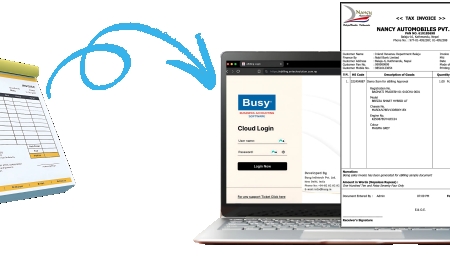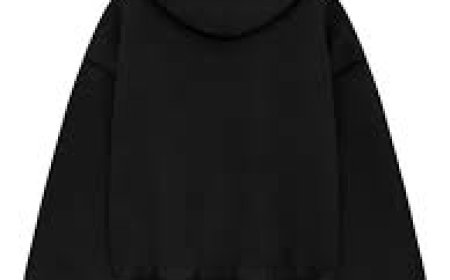The Rise of Sustainable Investing: How to Build a Green Portfolio in the UK
Sustainable investing has surged in popularity in the UK, driven by growing awareness of environmental and social issues. In 2025, UK investors are increasingly aligning their portfolios with their values, focusing on Environmental, Social, and Governance (ESG) criteria. With the UK aiming for net-zero carbon emissions by 2050, building a green portfolio not only supports ethical goals but can also deliver competitive returns. This guide outlines how UK residents can startsustainable investing, select green funds, and navigate the market effectively.
Why Sustainable Investing Matters
Sustainable investing prioritizes companies that address climate change, social equality, and strong governance. According to the Investment Association, UK ESG fund assets reached 90 billion in 2024, reflecting demand from eco-conscious investors. Beyond ethics, green investments can perform wellMorningstar reports that ESG funds often match or outperform traditional funds, with lower volatility in sectors like renewable energy. For UK investors, sustainable portfolios align with government policies, such as green energy subsidies, potentially boosting long-term returns.
Step 1: Understand ESG and Green Investing
ESG investing evaluates companies based on:
-
Environmental: Carbon footprint, renewable energy use, and waste management.
-
Social: Labor practices, diversity, and community impact.
-
Governance: Transparency, anti-corruption measures, and board diversity.
Green investing focuses specifically on environmental impact, such as clean energy or sustainable agriculture. Before starting, clarify your prioritiesdo you want to focus solely on climate solutions or broader ESG factors? Resources like MoneyHelpers ESG guide can help define your goals.
Step 2: Choose a Tax-Efficient Wrapper
To maximize returns, invest through tax-efficient accounts like Stocks and Shares ISAs, which allow 20,000 annually (2025 limit) with tax-free gains. Platforms like Hargreaves Lansdown, AJ Bell, and Interactive Investor offer ISAs with ESG fund options. For example, AJ Bells Responsible Growth Fund charges 0.35% annually, keeping costs low. SIPPs (Self-Invested Personal Pensions) are another option for long-term green investing, offering tax relief on contributions up to 60,000 yearly.
Step 3: Select Green Investment Options
UK investors have access to diverse sustainable products:
-
ESG Index Funds: Track indices like the FTSE4Good UK Index. Vanguards ESG Developed World All Cap Fund (0.25% fee) invests globally in sustainable companies.
-
Thematic ETFs: Focus on specific sectors like clean energy. iShares Global Clean Energy ETF (0.65% fee) includes firms like Vestas (wind turbines) and is traded on the London Stock Exchange.
-
Actively Managed Funds: Funds like Liontrust Sustainable Future UK Growth (0.85% fee) pick high-performing ethical UK companies, such as Unilever.
-
Green Bonds: Invest in projects like renewable energy infrastructure. NS&Is Green Savings Bonds (3-year fixed, ~3% return) fund UK environmental initiatives.
Use platforms like Morningstar or FundCalibre to filter funds by ESG ratings and performance. Avoid funds with high fees (above 1%), as they reduce returns. For example, a 10,000 investment with a 0.3% fee costs 30 annually, versus 100 for a 1% fee.
Step 4: Research and Avoid Greenwashing
Greenwashingwhen companies falsely claim sustainabilityis a risk. Check funds holdings using platforms like Interactive Investor to ensure they align with your values. For instance, some green funds may include fossil fuel companies. Look for certifications like the UK Sustainable Investment and Finance Association (UKSIF) label or funds adhering to the EUs Sustainable Finance Disclosure Regulation (SFDR). The Financial Conduct Authority (FCA) also introduced anti-greenwashing rules in 2024, requiring clear ESG claimsverify compliance on fund websites.
Step 5: Start Small and Diversify
You dont need a large sum to start. Many platforms, like Trading 212, allow investments from 100. Spread your money across sectors (e.g., clean energy, sustainable agriculture) to reduce risk. For example, allocate 5,000 across:
-
50% in a global ESG fund (e.g., Legal & General Future World ESG, 0.3% fee).
-
30% in a clean energy ETF (e.g., Lyxor New Energy, 0.6% fee).
-
20% in green bonds for stability.
Automate monthly contributions (50100) to benefit from pound-cost averaging, smoothing out market volatility.
Step 6: Understand Tax Implications
Within ISAs or SIPPs, gains and dividends are tax-free. Outside these, capital gains tax (CGT) applies above 3,000 annually (2025 allowance), and dividends face tax beyond 500. For a 10,000 ESG fund gaining 7% (700), staying within an ISA avoids CGT. Check HMRCs website for updates, as allowances may change.
Step 7: Monitor and Rebalance
Review your portfolio quarterly to ensure it aligns with your goals and market trends. Use apps like Sharesight to track performance. Rebalance annually to maintain your desired allocatione.g., if clean energy ETFs grow to 40% of your portfolio, sell some to restore balance. Stay informed via the FCA or Ethical Consumer for updates on sustainable investing regulations.
Tips to Maximize Your Green Portfolio
-
Start Early: A 5,000 investment at 6% annual return grows to 18,000 in 20 years, per compound interest calculators.
-
Combine Ethics and Returns: Balance high-growth sectors (e.g., renewables) with stable assets (e.g., green bonds).
-
Seek Advice: For complex portfolios, consult a financial adviser via Unbiased.co.uk (150/hour) for tailored ESG strategies.
Common Pitfalls to Avoid
-
Falling for Greenwashing: Verify fund holdings and certifications to avoid misleading claims.
-
High Fees: Avoid funds with fees above 0.8%, as they erode gains.
-
Overconcentration: Dont put all your money in one sector, like solar energy, to mitigate risk.
Final Thoughts
Sustainable investing in the UK offers a chance to support a greener future while building wealth. By choosing tax-efficient ISAs, researching ESG funds, and avoiding greenwashing, you can create a robust green portfolio in 2025. Start small, stay diversified, and monitor progress to align with your values and financial goals. Share your sustainable investing tips in the comments to inspire others!


































